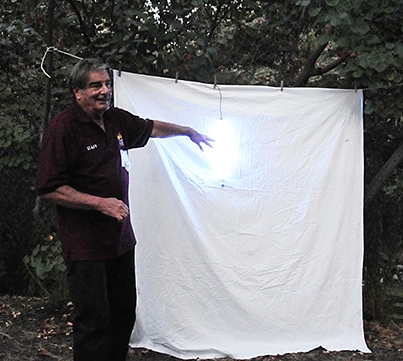
But the most striking: the grape leaffolder, Desmia funeralis.
More than 15 species landed on the blacklighting display at the Bohart Museum of Entomology's Moth Night open house on Saturday, July 22.
Bohart Museum associate Greg Kareofelas and senior museum scientist Steve Heydon set up the blacklighting display: a white sheet and a mercury vapor lighting to attract moths and other flying insects. Kareofelas has trapped night-flying insects in his backyard for more than 25 years.
The event drew some 145 people from 8 to 11 p.m. Most stayed for the entire time, said Tabatha Yang, education and outreach coordinator.
Inside the museum, located in Room 1124 of the Academic Surge Building on Crocker Lane, moths and butterflies took center stage. Visitors expressed amazement at the sizes and colors. Bohart associate Jeff Smith of Sacramento, who curates the butterfly and moth specimens, showed the worldwide collection and fielded questions.
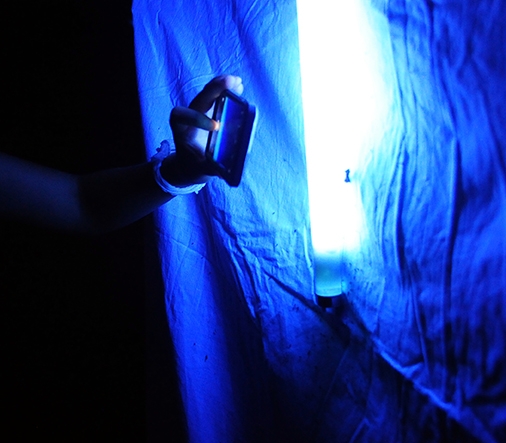
Visitors checked out The Trump moth, Neopalpa donaldtrumpi, is a relatively new species that Bohart Museum scientists collected at Algodones Dunes, bordering Arizona and the Mexican state of Baja California. Evolutionary biologist and systematist Vazrick Nazari of Canada named it donaldtrumpi because the yellow scales on the tiny moth's head reminded him of the hairstyle of Donald Trump, then president-elect.
The Bohart visitors gazed at the photo of President Trump and remarked how tiny the moth is. The wingspan of the orange-yellow moth is less than one centimeter.
Nazari published the piece on the Trump moth Jan. 17, 2016 in the journal Zookeys and explained the name: “The reason for this choice of names is to bring wider public attention to the need to continue protecting fragile habitats in the U.S. that still contain many undescribed species."

Of the Trump moths collected, Nazari kept one in Canada, the norm--but the holotype, the one he determined as the standard for the species--is a permanent part of the Bohart, said Tabatha Yang, education and outreach coordinator.
The Neopalpa donaldtrumpi belongs to the family, Gelechiidae of the Lepidoptera order.
A $75,000 scanning electron microscope, on loan from Hitachi Corp. for research and outreach, drew widespread attention. Youngsters participated in the family craft activity making a moth-shaped window ornament resembling stained glass. The public event was free was the hot chocolate, herbal tea and cookies served.
The next summer open house, also free and open to the public, is Sunday, Aug. 27 from 1 to 4 p.m. the theme is “Bark Beetles and Trees, Forest Health in California." The event is in collaboration with Steve Seybold, USDA Forest Service entomologist and an associate of the UC Davis Department of Entomology and Nematology. He and his students and staff will be there to show displays and answer questions.
The Bohart Museum, directed by Lynn Kimsey, professor of entomology at UC Davis, houses a global collection of nearly eight million specimens. It is also the home of the seventh largest insect collection in North America, and the California Insect Survey, a storehouse of the insect biodiversity. Noted entomologist Richard M. Bohart (1913-2007) founded the museum.
The museum's gift shop, open year around, includes T-shirts, sweatshirts, books, jewelry, posters, insect-collecting equipment and insect-themed candy.
The Bohart Museum's regular hours are from 9 a.m. to noon and 1 to 5 p.m. Mondays through Thursdays. The museum is closed to the public on Fridays, Saturdays and Sundays and on major holidays. Admission is free.
More information on the Bohart Museum is available on the website or by contacting (530) 752-0493 or email bmuseum@ucdavis.edu.
Attached Images:
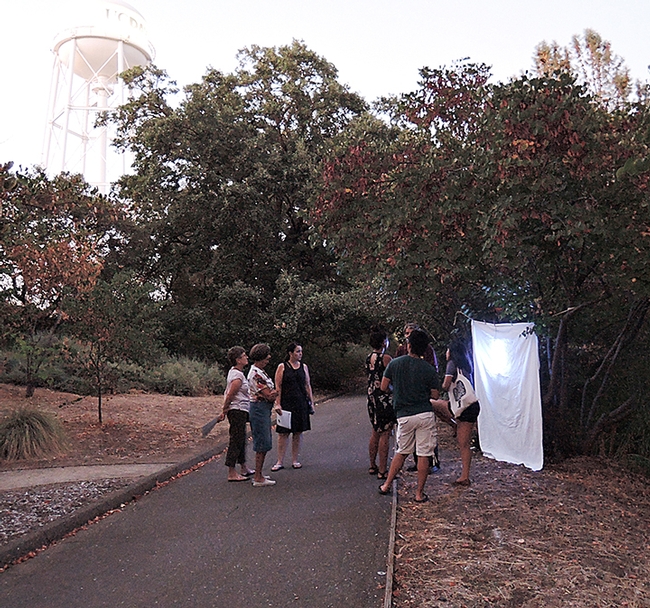
This was the scene at the blacklighting display Saturday night, July 22 at the Bohart Museum of Entomology. Greg Kareofelas (far right) had just set up the display. (Photo by Kathy Keatley Garvey)
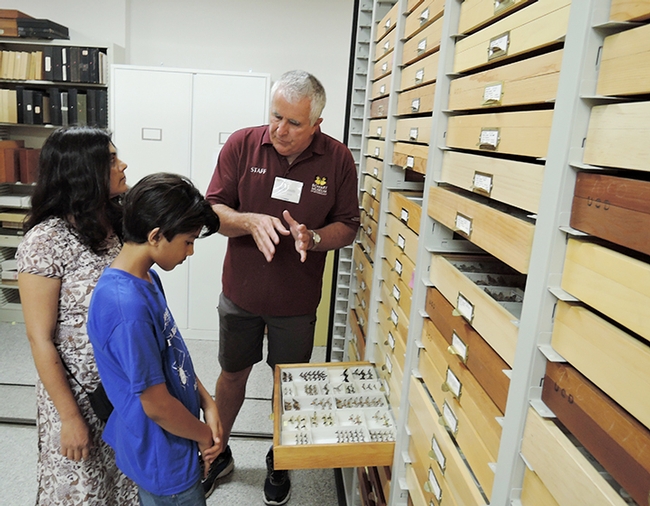
Entomologist Jeff Smith, who curates the butterfly and moth specimens at the Bohart Museum, talks to Prerna Jain and her son Prakrit Jain, 13, of Los Altos. Prakrit will be attending the Bioblitz in Belize this summer. (Photo by Kathy Keatley Garvey)
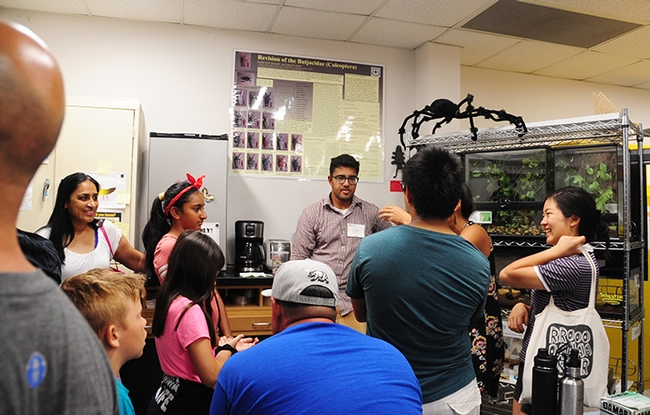
Bohart Museum associate and UC Davis entomology undergradate student Lohitashwa Garikipati (center) talks about the Bohart Museum's live petting zoo. (Photo by Kathy Keatley Garvey)
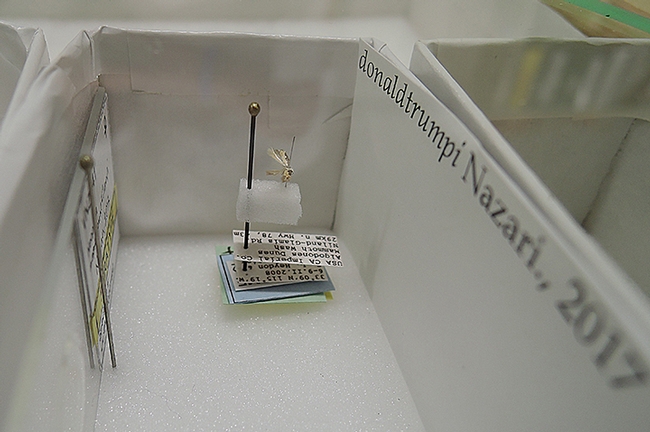
The Donald Trump moth, Neopalpa donaldtrumpi, is a permanent part of the Bohart Museum of Entomology. Bohart scientists collected the new species in the Algodones Dunes, and it was named by evolutionary biologist and systematist Vazrick Nazari of Canada. (Photo by Kathy Keatley Garvey)